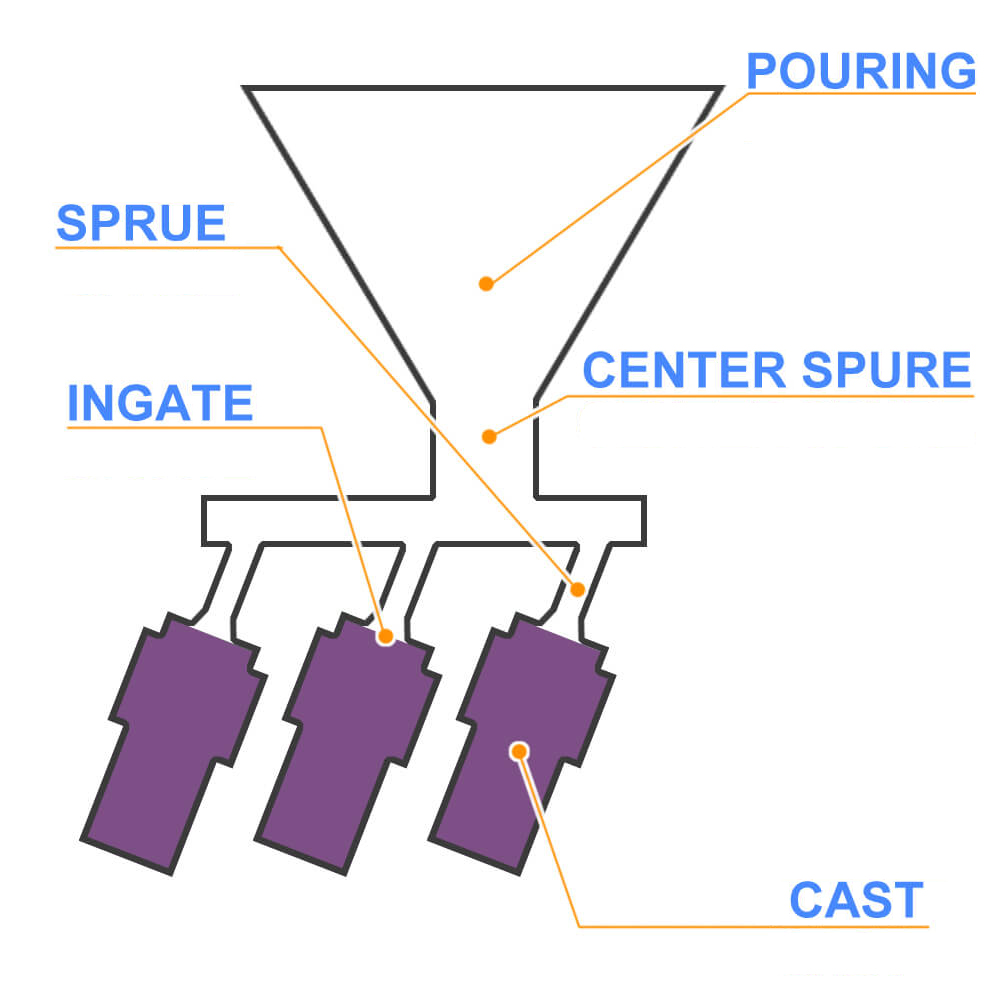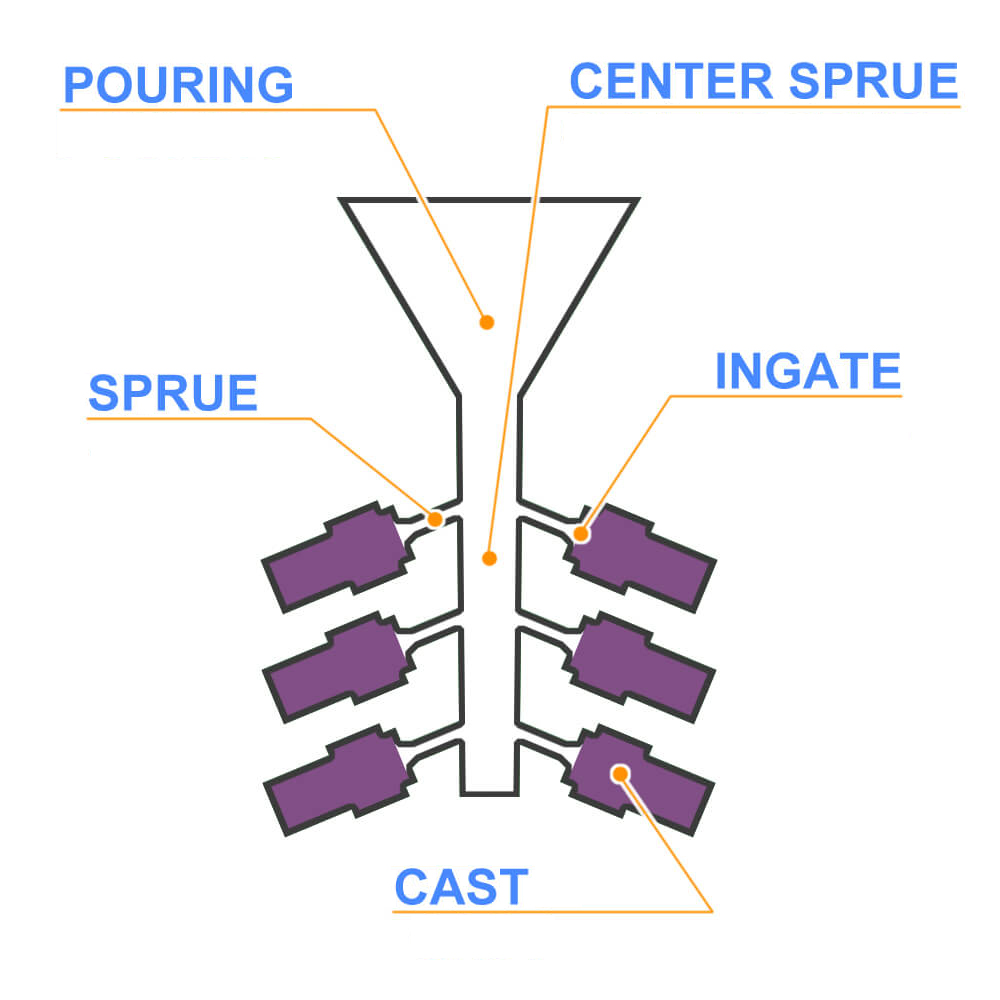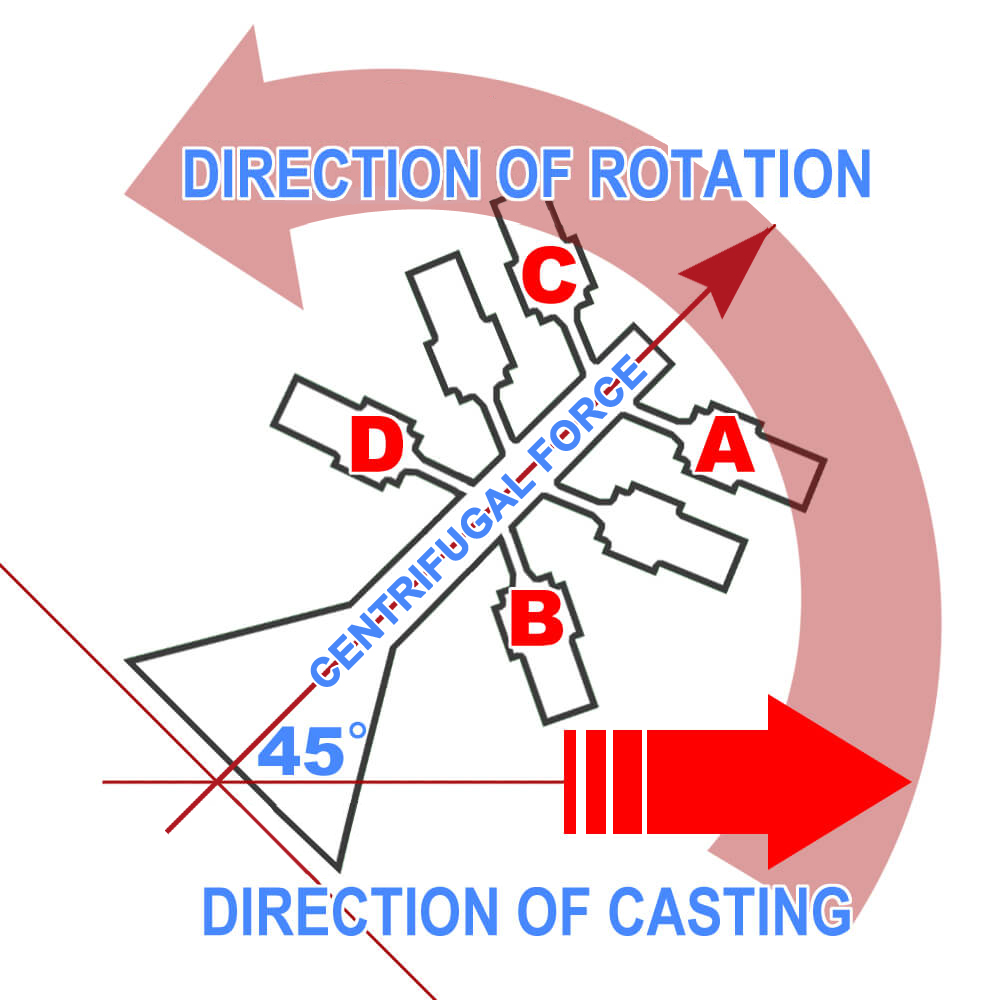★This column is a commentary on lost wax casting with a block molding method
This column has been presented by Yoshida Cast
Desired shape of the wax tree (casting tree) differs depending on casting method. The desired shape of the wax tree (casting tree) differs depending on the casting method, that is, direction of force applied during casting and size of a casting product.
It is also desirable to change shape depending on difference in melting point or/and metal that releases more gas during solidification.
In this column, wax tree shape for CENTRIFUGAL casting is explained.
Centrifugal casting applies centrifugal force in direction opposite to direction of casting rotation, so there is a directional flow of molten metal.
It is essential to attach casts (products) that do not go against the casting direction
Also, as explained in another column, "3 Principles of Wax Tree Setting", avoid a rounded shape such as bowl-shaped pouring.
[toc]
Ideal wax tree for centrifugal casting
Figure 1 shows a cross-sectional view of a plate-shaped main sprue horizontally attached to a conical shape pouring.
The castings (products) are arranged in rows on that plate and mounted inclined to the direction to be the same as centrifugal casting force.

Since centrifugal casting has higher castability, if the wall thickness at the bottom of a casting mold (flask) is too thin, the bottom may crack under the impact of melting metal being cast, causing the molten metal to fly out of the casting mold.

According to some repetitive experimental results, a finer center sprue seems to result in fewer casting defects.
Angles of product mounting in centrifugal casting
The figure below shows an image of casting direction for centrifugal casting.

In above figure, the direction of rotation is counterclockwise, so centrifugal force is applied in the opposite side from clockwise direction.
Among the 4 types of products "A", "B", "C" and "D" attached to a wax tree, the place with the least resistance to casting is "A", followed by "B", "C” and "D".
The angle of "D" may cause casting failure such as misrun in some cases.
Author : M. Yoshida
